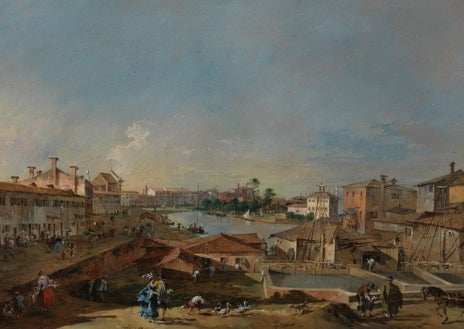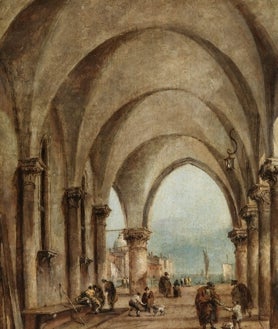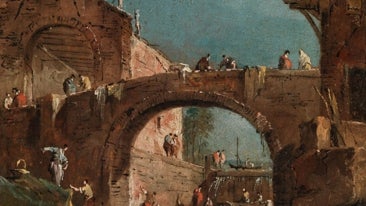Venice was always a tourist city, which attracted all kinds of curious from the Middle Ages. Aware of the passion that aroused among travelers, a painter, Luca Carlevarijs, He published in 1703 a city guide with 104 engravings to etching.
The success of the project was such that the production of prints and pictures with views of the city became a lucrative business. Several renowned workshops, including those of Marieschi and Canaletto, The maximum figure of the genre entered the game.
Also that of the Guardi family, whose most notable representative was Francesco. It was a difficult time for the Venetian Republic, increasingly irrelevant in the international concert, but enjoyed a splendid present in the artistic order comparable to its best times. Vivaldi, Albinoni, Tartini, Galuppi, Piranesi, Rosalba CarrieGoldoni, Lorenzo Da Ponte, Canova or Casanova, to quote only the figures of the time, demonstrate it.
Full maturity
The 19 works of Francesco Guardi that can now be contemplated in the Madrid Thyssen Museum (belonging to the Calouste Gulbenkian collection, A philanthropist of Armenian origin that created the wonderful Lisbon Foundation that bears his name) were made between 1765 and 1791, when he was already a mature artist. Guardi painted from a young age, but debuted as Vedutista too late, in 1756, with 44 years. Although Critics disagree who could be their model, The quality of its urban panoramic Canaletto
It is not clear that it was so, and if it was, it did not prevent his style from taking a radical turn precisely at the time he executed the paintings that Gulbekian bought. The geometric and meticulous perfection of Canaletto, dead in 1768, became his works (not all, of course, because the workshops live from the routine), in a loose, lively and seductive painting, which explains The attraction that aroused among the impressionists.


From top to bottom, ‘The departure of the Burvoro’ (h. 1765-1780); ‘Dolo gates’ (h. 1774); and ‘The porch of the Ducal Palace’ (c. 1778)
What was the cause of that turn? The scholars agree that the intense lyricism that can be seen in so many works from that date (‘Vedute’, architectural fantasies or ruins, theme that did not reflect the nostalgia of better times, but the feeling of the disaster that was coming) Relationship with the reigning pessimism in Venice. No one there was willing to give up ‘La Gioia di Vivere’ that constituted their hallmark, but everyone knew that the end of the millenary regime that made it possible was imminent. In fact, the serenísima fell in 1797, four years after the death of the painter.
A painting of 1765, ‘La Gondola in La Laguna’, owned byL POLDI PEZOLI MUSEUM OF MILAN, It marks the beginning of that style characterized by the deliberate lack of rigor in the perspective, the nervous character of the brushstroke, the darkening of the colors and the spiritual sensation of claudication and fading that is reflected in the way in which Venice seems to sink into the Waters. AGOREROS CELAJES AND BUILDINGS OF IN PRESTIBE CONTURNOS They reflect the pessimism of someone who more to reproduce What he sees, struggles to preserve the atmosphere of a city that was everything and now agonized.

‘Guardi and Venice in the Gulbenkian Museum collection’
Collection. Thyssen Museum. Madrid. Paseo del Prado, 8. Commissioner: Mar Borobia. Until May 11. Three stars.
Unfortunately, they are not the pieces of Gulbenkian The most representative of this trend. With being relevant, and some very beautiful, most do not reach the level of the painter’s masterpieces. I do not say this to make the thyssen’s sample, that will surely please fans, but to claim the figure of an artist who signed even better works.
#Guardi #Venice #diluted #fingers



